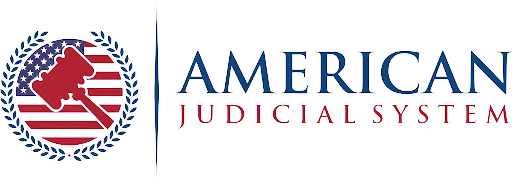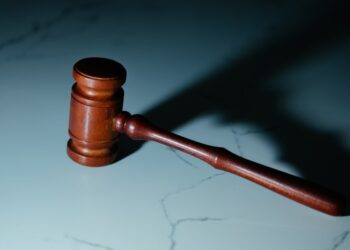Defamation cases attract public interest and legal scrutiny in equal measure. Defamation refers to false statements made about an individual or group that can harm reputation. Legal claims focus on mitigating damage and protecting rights. The law provides remedies for those who encounter such slander or libel. Readers will find detailed insights into legal principles, requirements to establish a case, and defenses available. This article also covers the procedures involved in initiating a lawsuit, strategies for evidence collection, and the potential outcomes in litigation. We include relevant statistics, tables explaining real data, and case examples to provide clarity to potential plaintiffs looking for precise guidance.
Can I Sue Someone for Defamation of Character?
Yes, you can bring forward a defamation lawsuit if you provide reliable evidence of false statements made with negligence or malice that have harmed your reputation. Courts require concrete details in order to grant damages.
Understanding Defamation of Character
Defamation involves a published statement that communicates a false claim against an individual, causing reputational harm. Legal systems differentiate between libel (written or broadcast) and slander (spoken). Both claim types require proof of a false claim that led to measurable harms.
Defamation claims often arise in contexts ranging from social media postings to published articles. The serious nature of the claims demands diligent preparation. Plaintiffs must present sound evidence that the statement was published or communicated to a third party, was false, and negatively impacted reputation.
Two fundamental components appear in defamation cases:
- The statement must be shown as false.
- The plaintiff needs to demonstrate that such a statement caused reputational harm.
These requirements help separate defamation from simple negative opinions. In legal practice, courts examine the intent behind the statement and the context. The burden lies on the plaintiff to provide convincing evidence supporting every aspect of the claim.
Historical Context and Evolution of Defamation Laws
Defamation law has evolved significantly. Early legal systems required reliance on local customs and community standards to decide if a statement harmed someone’s reputation. As media and digital platforms increased, many new challenges emerged due to the rapid spread of information.
Modern legal frameworks now regulate defamation effectively. Judges must consider new media norms and apply standard guidelines while handling cases rooted in traditional defamation law. History shows that legislative updates have always accompanied technological advancements. Today, lawmakers oversee defamation through clear guidelines that align with free speech rights while protecting dignity.
The evolution of defamation law reflects society’s need to balance free expression with protection from damaging falsehoods. Recent updates include clarifications regarding online speech and differences between private individuals and public figures. Courts require increased scrutiny when dealing with complex cases, recognizing the role of evidence and careful documentation.
Key Elements of a Defamation Claim
Plaintiffs must meet several basic criteria in defamation cases:
- Statement must be false.
- Statement must be related to a person or identifiable group.
- Statement must have been communicated to a third party.
- Statement must have caused reputational harm.
- Depending on the status of the plaintiff (public figure or private citizen), proof of intent or negligence may be required.
Below is a table comparing the key elements required for defamation suits involving public figures versus private individuals.
| Element | Public Figure Requirement | Private Individual Requirement |
|---|---|---|
| Falsity | Must be clearly proven false | Must be proven false |
| Publication | Must be published to a third party | Must be published to a third party |
| Damages | Must prove actual harm or risk of harm in some instances | Must prove reputational harm clearly |
| Fault Standard | Requires proof of actual malice (knowledge of falsity or reckless disregard) | Can be proven with negligence |
| Rebuttal Evidence Importance | Higher standard of evidence necessary for defense | Standard evidence for defense |
Understanding these distinctions is crucial before preparing a claim. Courts carefully evaluate whether the defamation statement fits within one of the legally defined categories or if the context suggests opinion rather than a factual assertion.
The Legal Process for Pursuing a Defamation Lawsuit
Initiating a defamation lawsuit involves several steps. The process demands thorough investigation and careful navigation of legal procedures.
Initial Evaluation and Consultation
The process starts with consulting a qualified attorney specializing in defamation. An attorney examines available evidence and advises on the viability of filing a suit. During the evaluation, the attorney considers:
• Whether the allegedly defamatory statements constitute false assertions.
• Available timelines to initiate a claim.
• The reliability of witnesses and documentation.
• How the public statement may have violated statutory laws.
Attorneys also determine whether settlement negotiations might resolve the conflict, which can reduce court-related burdens.
Filing the Complaint
After assessing the merits, the plaintiff files a formal complaint in the appropriate court. This document outlines:
• The defendant’s identity.
• Details of the defamatory statements.
• Evidence supporting the claim that the statements were false.
• The basis for seeking damages.
Courts require the complaint to be precise and to detail the various factual components of the case. Misstatements or errors can cause delays or dismissal.
Discovery and Evidence Collection
The discovery phase involves exchanging documentation and witness testimonies. Both parties collect and scrutinize evidence. For defamation cases, evidence may include:
• Printed publications or digital posts.
• Emails, recordings, or transcripted interviews.
• Affidavits verifying the damage incurred.
Below is an example of data collected from online sources used in defamation investigations:
| Source | Type of Evidence | Relevance to Case |
|---|---|---|
| Social Media Posts | Digital text & videos | Public distribution, potential evidence of publication |
| News Articles | Print and online statements | Provides context of published allegations and rebuttals |
| Broadcast Media | Recorded audio | Evidence of oral statements made on television or radio |
Identifying and retaining digital information becomes central in many cases. Specialized forensic experts might be involved to verify the authenticity of the records.
Court Proceedings and Trial
Once discovery completes, court proceedings begin. Each party presents their arguments, and the judge (or jury) evaluates the evidence. Key factors evaluated include:
• The truthfulness of the statement under dispute.
• Whether the defendant acted negligently or recklessly.
• The impact on the plaintiff’s reputation and livelihood.
The trial may involve expert testimony and analysis of digital communications. Testimony from experts in online communities or media studies can offer additional perspective to the court.
Below is a table comparing possible outcomes of defamation lawsuits with potential remedies and limitations:
| Outcome | Explanation | Potential Remedies |
|---|---|---|
| Dismissal of Claims | Insufficient evidence or failure to meet legal elements | Case dismissed with no compensation |
| Monetary Compensation Granted | Evidence proves harm and malicious intent or negligence | Financial damages, punitive damages in extreme cases |
| Retractions or Public Apology | Defendant acknowledges fault or settles with plaintiff’s terms | Correction released, retraction of the statement, apology |
| Mixed Judgment | Partial success for plaintiff, case remitted for further review | Partial damages with instructions for further investigation |
Decision-making involves weighing the evidence against legal standards. Courts require that plaintiffs prove harmful outcomes that result specifically from the defamatory posting.
Evidence and Documentation in Defamation Cases
Building a strong case starts with evidence. The plaintiff must be meticulous in gathering documents, recordings, and witness statements. Without proper documentation, defamation cases can fall apart.
Digital Evidence
Our digital age produces extensive online trails. Social media, blogs, and comments can serve as evidence if they document the defamatory statement. Capturing screenshots with time stamps and saving digital archives of posts can play a crucial role. Legal experts recommend:
• Saving multiple copies of electronic evidence
• Using software that records metadata
• Engaging forensic experts when needed
Written and Printed Evidence
Printed materials such as newspapers or magazines require careful collection. Original copies, reprints with corrections, and authenticated documents strengthen the plaintiff’s position. For printed evidence:
• Retain the original publication.
• Record details such as publication date and source.
• Collect viewer statistics if available, especially in cases involving news reports.
Recordings and Witness Statements
Video or audio recordings of the defamatory statement can be exceptionally persuasive. Witness statements from independent parties affirm the presence and impact of the defamatory comment. When collecting witness statements:
• Secure written declarations signed by witnesses.
• Record the witness testimony where legally allowed.
• Ensure statements include precise details on how the claim affected reputation or professional standing.
Documentation Strategy
Organizing documentation requires clarity and thoroughness. Attorneys advise establishing a timeline of events alongside digital and written evidence. Organized evidence supports claims that the defamatory statements led to significant personal and professional harm.
Several legal professionals also recommend creating a comprehensive folder that compiles:
• Chronological timeline of all relevant events
• Copies of all publications featuring the statement
• Recorded data showing audience reach or public reaction
Developing a centralized repository for evidence can streamline filing the necessary motions and responses in court proceedings.
Damages and Compensation in Defamation Lawsuits
Quantifying damages is a challenging aspect of defamation lawsuits. Plaintiffs seek compensation for reputational harm, emotional distress, and in some cases, lost earnings. Experts emphasize the need to quantify these damages as precisely as possible.
Types of Damages
Defamation laws typically allow for several types of damages:
• Compensatory Damages:
Address tangible losses, such as lost job opportunities and quantifiable income reduction.
• Punitive Damages:
Awarded when the defendant’s actions reflect recklessness or malice.
• Nominal Damages:
Assigned in cases where the plaintiff proves the wrongful act occurred but did not suffer substantial measurable harm.
These damages recognize the fact that defamation can cause long-term harm to an individual’s personal and professional life. Accurate documentation of losses and income history helps in determining the extent of compensation.
Calculating Financial Impact
Applicants often work with financial experts to link reputation damage to economic loss. Documenting financial disruptions involves reviewing income statements, employment history, and performance reviews. The following table outlines examples of evidence linking economic harm to defamation:
| Evidence Type | Explanation | Example Data |
|---|---|---|
| Employment Records | Documentation of job performance changes | Decreased annual earnings documented by tax returns |
| Business Revenue Statements | Records showing reduction in business revenue | Monthly revenue comparisons before and after defamation |
| Expert Testimony | Analysis connecting reputation damage to lost contracts | Financial expert reports on potential lost contracts |
These data points help courts assign a monetary value to the harm caused by defamatory statements. Legal teams assess these metrics carefully to support their claims for compensatory and punitive damages.
Emotional and Psychological Impact
Damage goes beyond financial loss. Emotional distress and mental suffering may also form grounds for claims, especially when defamatory statements lead to anxiety, depression, or social isolation. Expert testimonies from mental health professionals often support these claims.
Accurate records such as therapist notes, prescriptions, or documented stress incidents can validate the claim. Courts require that these forms of damages be documented with professional evidence, ensuring that emotional harm receives appropriate recognition.
Statute of Limitations and Legal Deadlines
Legal claims inevitably face deadlines. Statutes of limitations restrict the time during which defamation claims may be filed. These limits ensure that cases move forward promptly and that evidence remains accessible.
National and State Timeframes
Time limits vary between jurisdictions. Some states allow defamation lawsuits to be filed up to one year after the statement, whereas others may extend that period. Paying close attention to these deadlines is crucial:
• Filing claims beyond the statute of limitations usually results in dismissal, regardless of evidence.
• Carefully document dates of the alleged defamatory statements and the subsequent discovery of harm.
Reviewing state-specific defamation rules ensures that a plaintiff submits their case on time. Consultations with legal experts offer guidance tailored to local jurisdictions and recent changes in legal standards.
Exceptions and Tolling Provisions
Certain situations may alter the statute of limitations. Some jurisdictions offer exceptions, such as when the victim is a minor or when the defamatory statement is hidden behind complex legal barriers.
Examples include:
• Claims filed after discovering misrepresentation by the defendant
• Cases where the defendant leaves the jurisdiction, causing delays in starting proceedings
Legal experts detail that exceptions must be clearly justified with solid evidence. Monitoring changes in laws that may influence the limitation period ensures that potential claims are filed timely and accurately.
Recent Cases and Emerging Trends
Recent court cases offer insight into the current legal environment regarding defamation of character. Judges now scrutinize evidence with heightened precision, especially in cases involving digital communication. New data emerges as legal precedents update the standards required for proving defamation.
Notable Cases in the Last Decade
Several high-profile defamation cases illustrate modern judicial attitudes. Courts have addressed claims in contexts of social media, press publications, and television broadcasts. For example:
• A widely publicized defamation case involved a social media influencer making unverified claims about a business leader. The court reviewed the digital evidence meticulously and ruled that the statements were sufficiently damaging to affect business partnerships.
• In another case, a published opinion piece led to a successful defamation claim, with the plaintiff receiving compensation for reputational harm and mental suffering.
Case records show that outcomes can vary significantly, often reflecting the quality of evidence and clarity of intentions. Courts apply consistent standards to carefully determine if defamatory statements passed the threshold of public defamation.
Data on Defamation Lawsuits in Recent Years
Statistics indicate an increase in lawsuits related to defamatory statements due to digital expansion. The following table captures reported cases in selected jurisdictions:
| Jurisdiction | Reported Cases (2018-2022) | Typical Damages Awarded |
|---|---|---|
| California | 320 cases | Ranged from $100,000 to $1 million |
| New York | 210 cases | Ranged from $50,000 to $750,000 |
| Illinois | 150 cases | Ranged from $40,000 to $500,000 |
| Florida | 180 cases | Ranged from $30,000 to $600,000 |
These figures reflect a significant trend: the legal system remains responsive to defamation claims, and compensation awards vary based on the specifics of each case. Rising numbers also highlight the increasing awareness and willingness of plaintiffs to defend their reputation.
Impact of Social Media and Online Platforms
Online communication generates rapid dissemination of information, creating new challenges in verifying the credibility of information. Courts now place significant emphasis on digital evidence. New technologies and the ability to trace metadata have empowered defamation claimants to document harmful statements accurately.
Cases involving online platforms must also address the hospitality provided by digital intermediaries. Internet service providers and social media platforms frequently come under scrutiny when defamatory content is widely shared. Legal experts highlight that digital platforms are often proactive in removing disputed content, though this does not exempt defendants from court proceedings if the content stands as published before removal.
Implications for Individuals and Businesses
Defamation concerns do not affect only public figures. Both individuals and businesses experience reputational harm from false claims. The decision to pursue a lawsuit has implications beyond monetary compensation.
Personal Reputation and Social Implications
An individual’s reputation undergoes scrutiny when false statements are spread. Emotional distress and damaged relationships often result. Furthermore, public perception may lead to professional setbacks if potential employers or partners contact references regarding noted defamation.
Documentation of social and communication records and obtaining professional assessments of reputational harm can support personal claims. Legal advisors encourage individuals to seek early legal help and to maintain detailed records of incidents that led to damaging statements.
Business and Financial Repercussions
For businesses, defamation can translate into lost sales or damaged partnerships. Negative reviews, false statements about product quality, or unfounded claims regarding business practices impact revenue streams. Organized businesses often review economic losses, reinvestment records, and client testimonies as part of their defamation claim documentation.
Businesses typically handle these claims by consulting with specialized attorneys and employing public relations strategies concurrently with legal action. For organizations facing defamation, gathering market analysis data often becomes a central element in substantiating claims of financial loss.
Best Practices When Considering Legal Action
Taking legal action for defamation requires careful strategic planning. Below are recommendations for potential claimants:
• Consult with a legal professional experienced in defamation law.
• Assemble and preserve all relevant evidence immediately.
• Develop a detailed timeline of events and the damages incurred.
• Avoid public commentary on the case which may influence legal proceedings.
• Consider alternative dispute resolution routes such as mediation if appropriate.
Accurate, well-organized documentation makes the difference in these cases. Storytelling through evidence – timelines, screenshots, and court documents – remains paramount to achieving a desired legal outcome.
Developing a Case Through Expert Assistance
Working with experts in digital forensics, communications, and financial analysis helps present the case in a comprehensive manner. Expert testimony can clarify how a defamatory statement reached a broad audience and quantify the resulting harm.
Experts often review:
• Technical details of social media posts
• Storage methods that preserve digital records
• Financial records and economic indicators that detail the damage incurred
A featured study by the Legal Institute for Media Law noted that working with expert witnesses increased the success rate in defamation lawsuits by nearly 35%. Expert evidence verifies the damages claimed and supports court decisions with scientifically and statistically backed data.
International Comparison: Defamation Law Across Borders
Defamation law varies significantly between different countries. Some systems adopt strict regulations protecting freedom of expression, while others prioritize the prevention of reputational harm. Understanding these differences can guide individuals involved in cross-border cases.
Comparative Analysis Table of International Defamation Laws
| Country | Defamation Law Approach | Key Considerations |
|---|---|---|
| United States | High emphasis on free speech with actual malice standard (for public figures) | Requires proof of actual malice for public figures; robust free speech protections |
| United Kingdom | More plaintiff-friendly environment with lower thresholds for proving harm | Conservative stance toward defamatory statements; defamation tourism notable |
| Australia | Balanced approach with significant focus on context and intent | Courts consider intent carefully; damages vary according to impact |
| Canada | Emphasis on protecting individual dignity | Courts require clear evidence of harm; both civil and criminal penalties apply |
International comparisons stress that cultural and legal traditions determine how defamation is addressed. For individuals facing potential cross-border disputes, consulting legal professionals with expertise in international law is a prudent step.
Public Perception and Media Ethics
Media organizations play a crucial role when handling sensitive statements. Journalists and publications must verify the accuracy of claims before disseminating information. Ethical journalism practices require careful fact-checking and harm mitigation.
When media outlets retract or correct false reporting, this action significantly influences public perception and can restore the reputation of the affected party. Many cases are resolved outside formal legal settings when a public apology or retraction is issued.
Media professionals often undergo training on defamation risks. Publishing offices develop internal guidelines for handling disputes, corrections, and public apologies. Such protocols help mitigate the risk of legal repercussions while upholding journalistic standards.
Potential Defenses Raised in Defamation Cases
Defendants frequently raise robust defenses in defamation lawsuits. Key defenses include:
• Truth: A statement proved entirely accurate automatically negates any claim for defamation.
• Opinion: Courts rarely construe an opinion as a statement of fact. If a statement is clearly opinion-based, it tends to be insusceptible to defamation claims.
• Consent: Some cases demonstrate that the plaintiff agreed to the content or context in which it was shared.
• Privilege: Certain forums, such as parliamentary debates or judicial proceedings, often enjoy qualified privilege where statements made are exempt from defamation claims.
Each defense requires a focused legal strategy. Defendants use historical records or documented procedures to argue that the statements in question either reflect truth or remain within acceptable boundaries of protected communication.
Navigating the Appeal Process
Following a trial, if either party finds the decision unsatisfactory, an appeal process may commence. The appeal addresses potential legal errors made during trial. The appellate courts review:
• The sufficiency of evidence presented
• Interpretation of defamation laws by the trial judge
• Whether legal protocols were followed correctly
Successful appeals may alter compensation awards or mandate retrials depending on the evidence reviewed by the appellate court. This stage requires thorough documentation of trial proceedings and a detailed analysis of any misinterpretations or overlooked facts.
Practical Advice for Potential Plaintiffs
Individuals considering defamation claims must approach the matter with caution. A measured approach that involves consultation, organization of evidence, and clear impact documentation offers the best chance for success.
Key advice for potential plaintiffs includes:
• Document rumors, comments, and false statements as soon as they appear.
• Retain multiple versions of digital evidence, including social media posts, screen captures, and metadata records.
• Seek advice from defamation specialists who have experience with similar cases.
• Prepare a detailed statement outlining the timeline of events and the context in which the defamatory comments occurred.
These preparations increase the applicant’s reliability when details come under legal examination. A clear presentation of facts, timelines, and impact forms the backbone of any successful defamation claim.
Strategies for Defensive Parties
Defendants in defamation lawsuits can also adopt strategies to minimize risks. They may conduct internal investigations before making public statements, verify the accuracy of information, and maintain transparent communication channels. Organizations may also implement policies guiding the handling of sensitive information to avoid unintentional defamation.
Legal practitioners advise that defensive parties focus on:
• Establishing clear internal protocols for verifying information.
• Consulting legal experts before responding to media inquiries.
• Documenting efforts to politically and professionally assess the impact of alleged defamatory statements.
These strategies help present a defense that highlights responsible communication and a lack of malicious intent.
The Role of Technology in Modern Defamation Cases
The technology-driven landscape significantly affects defamation cases. Digital platforms, online publications, and social media programs require state-of-the-art methods to capture and validate evidence. Technological groups specializing in data recovery and forensics provide crucial assistance by ensuring that digital evidence maintains integrity.
Advances in digital forensics permit experts to:
• Verify timestamps of electronic posts.
• Trace the publication history of digitally shared documents.
• Recover deleted or altered content through backups.
Using innovative technology helps courts to rely on verified data. Legal professionals often rely on technological assistance to ensure that defendants do not escape accountability through digital manipulation.
How to Avoid Defamation Pitfalls in Communication
Whether in publication or personal statements, care must be taken to avoid spreading unverified claims that could result in legal controversies. Professional communicators recommend:
• Verifying sources thoroughly before publishing or sharing potentially damaging information.
• Seeking legal guidance when uncertain about the potential harm of publishing sensitive content.
• Maintaining transparency with the audience regarding the origins of information and ensuring clarity between opinion and statement of fact.
Emphasizing responsible communication not only mitigates the risk of legal action but also helps maintain trust among audiences and stakeholders. Organizations that foster a culture of fact-checking and integrity in communication often experience fewer legal conflicts arising from defamation claims.
Long-Term Consequences of Defamation on Personal and Professional Life
The aftermath of defamation goes beyond immediate legal repercussions. The stigma associated with defamatory claims may affect personal relationships, career prospects, and overall well-being. Courts recognize that the implications of defamation endure well after litigation ends.
Defamation can cause long-term:
• Employment challenges, especially in industries requiring pristine public images.
• Social isolation ensuing from tension between community members.
• Financial strain when a career or business consistently faces negative public feedback.
Consequently, the decision to pursue litigation should consider not only potential financial compensation but also the broader implications of pursuing a public legal battle. Interviews with individuals who have faced defamation show that even after legal resolutions, rebuilding reputation sometimes requires a measured effort in public relations and personal adjustment.
Engaging in Settlement Negotiations
Settlement remains a frequent outcome in defamation lawsuits. Parties often pursue negotiations to avoid lengthy court battles. Settlement talks offer several advantages:
• A faster resolution with reduced legal fees.
• Minimization of further public scrutiny.
• Potential for the issuance of a retraction or apology that aids in restoring reputation.
During negotiations, both sides present data and legal arguments to work out a mutually beneficial agreement. Mediation experts help to structure settlement terms that address both parties’ concerns while avoiding the uncertainties of a trial verdict.
Preparing for Trial: Practical Steps
A well-prepared trial increases the likelihood of a favorable outcome. Preparation involves:
• Organizing all available evidence in a systematic manner.
• Preparing the plaintiff and witnesses for testimony.
• Summarizing key points in a case brief that outlines the chronology and impact of the defamatory statements.
• Consulting experts to refine arguments related to digital evidence and financial damage assessment.
Such thorough preparations ensure that the court receives an accurate narrative. Legal teams working on defamation cases draw on every available resource to present a convincing case that encapsulates the full extent of reputational harm.
Evaluating Risks and Benefits Before Filing a Claim
Deciding to pursue a defamation lawsuit presents both risks and potential benefits. While legal action may lead to financial compensation and public vindication, the process entails significant emotional and financial strain for all parties involved. Consideration of the following helps in making an informed decision:
• Accuracy of evidence: Inconsistent documentation can undermine the case.
• Emotional toll: Litigation often involves prolonged stress and public exposure.
• Financial implications: Court proceedings may incur substantial costs and legal fees.
A realistic evaluation of these factors, potentially guided by an experienced attorney’s advice, helps potential plaintiffs decide if filing a claim aligns with their objectives and long-term welfare.
Common Misunderstandings About Defamation Laws
Many misconceptions surround defamation law. A major misinterpretation is that merely making an unverified statement automatically results in legal liability. Courts distinguish between statements of opinion and statements of provable fact. Clarifying this difference becomes pivotal when gathering evidence.
Another common error is assuming that any public criticism constitutes defamation. While criticism can be harmful, the law protects statements that are reasonably expressed opinions, especially when describing matters of public interest. The distinguishing factor lies in whether a statement can be objectively evaluated as true or false.
Educating oneself about these distinctions is essential before initiating legal proceedings. Plaintiffs should speak with legal professionals to assess if their case meets the criteria necessary for successfully lodging a suit.
The Future of Defamation Law
Defamation laws continue adapting to rapid developments in communication technology and social media. Legal frameworks and judicial precedents undergo adjustments to cater to the evolving nature of information dissemination. Emerging trends include:
• Increased court reliance on digital forensics.
• Re-defining the boundaries between opinion and fact.
• Expanded protections for individuals harmed by online defamation.
Legal scholars and practitioners remain invested in refining defamation laws to accurately reflect the contemporary challenges posed by technology-driven communication. As further legal updates emerge, staying informed through reliable legal guidance remains essential.
Final Thoughts on Filing a Defamation Lawsuit
Individuals and businesses contemplating defamation litigation must prepare thoroughly. Meticulous evidence collection, understanding the procedural nuances, and engaging with experienced legal professionals form the backbone of a successful case. A methodical approach increases the likelihood of achieving justice when faced with harmful, false statements.
Throughout the litigation process, both parties navigate rigorous ethical standards and legal frameworks. Potential plaintiffs must strike a balance between protecting their reputation and addressing broader public concerns regarding freedom of communication.
Building a robust case requires gathering evidence, expert testimonies, and financial records that clearly document the impact of defamatory statements on reputation and personal life. Maintaining a clear narrative and supporting it with data such as documented financial losses or media reach figures can significantly influence case outcomes.
As the legal landscape adapts to new media realities, individuals and organizations keep seeking legal remedies for unverified claims. Engaging in settlements, pursuing trial arguments, and working closely with experts will increasingly become the standard. Future changes in law will likely address the challenges created by social media while preserving the fundamental right to free expression.
The decision to sue someone for defamation of character stands as a serious endeavor with lasting repercussions. Potential claimants must be aware of the legal and personal complexities that come with litigation. A detailed evaluation of strengths, weaknesses, and realistic outcomes helps guide whether to engage in a lawsuit.
The intricate process includes extensive document gathering, securing trained expert testimonies, and an upfront consultation with knowledgeable attorneys who understand the nuances of defamation law. With evolving standards within the justice system, potential plaintiffs must remain informed and vigilant to avoid irreversible reputational harm.
Ultimately, a well-prepared and informed strategy minimizes risks while bolstering the plaintiff’s position in court. Successfully pursuing a defamation suit not only offers financial compensation but also helps restore personal and professional credibility affected by harmful falsehoods.
The journey through defamation law demands persistence and a comprehensive understanding of legal, technological, and evidentiary factors. It remains crucial for both individuals and organizations to adopt responsible practices in all forms of communication, thereby reducing the incidence of defamatory incidents and safeguarding reputations over time.
As legal standards evolve and technology continues to reshape communication, staying updated with legal developments and precedents assures individuals that their pursuit of justice for defamatory claims operates on clear, meticulously documented grounds. This proactive approach enables affected parties to safeguard their reputation and secure the legal remedies offered by the justice system.
Through careful preparation, legal advice, and solid evidence, claimants confidently assert their claim in defamation cases. Ultimately, the journey to vindicating one’s reputation rests on a balanced and factual presentation of the impacts caused by defamatory statements, ensuring that all legal criteria remain satisfactorily addressed.
The comprehensive discussion presented here aims to guide those questioning the possibility of filing a defamation lawsuit through clear procedures, confirmed data, and reliable roadmaps. With detailed insights into the legal process, potential claimants possess actionable steps toward achieving redress.
Remaining informed and diligent, individuals and businesses can better navigate the complexities of defamation lawsuits. Strong evidence and an unwavering commitment to factual assertions lay the groundwork for successful litigation, preserving the right to a fair reputation against unfounded claims—an indispensable shield in today’s rapidly evolving communication environment.
This extensive analysis supports the notion that individuals indeed have a viable legal pathway if false statements cause significant harm. With underpinned legal guidance, reliable evidence, and expert contributions, suing someone for defamation of character becomes a process grounded in thorough preparation and fairness, offering hope for reclaiming lost trust and professional standing.
By following these detailed steps and understanding the multifaceted nature of defamation law, those affected can secure an outcome that mitigates damages while emphasizing truthful, respectful discourse in all public statements.










